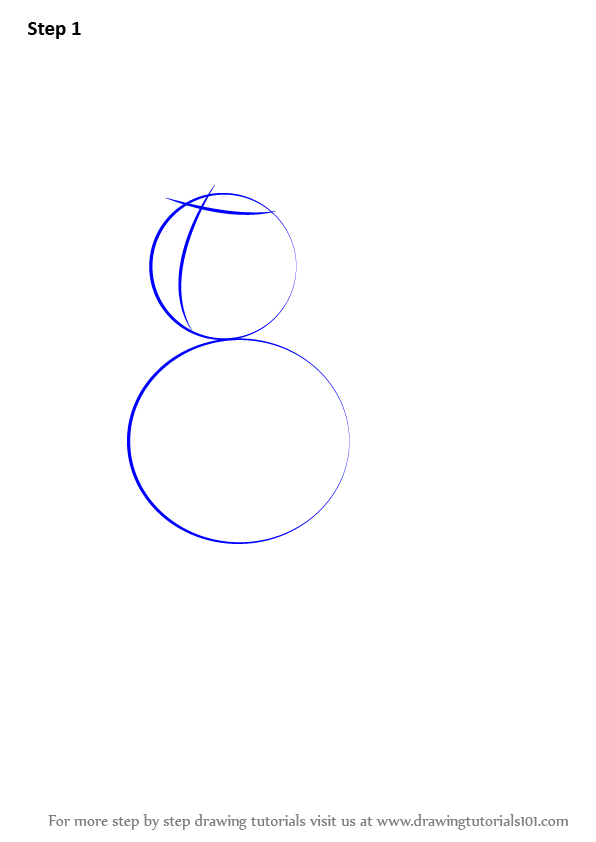The approach just described can become quite tedious when you're creating a large grid of subplots, especially if you'd like to hide the x- and y-axis labels on the inner plots. For this purpose, plt.subplots() is the easier tool to use . Rather than creating a single subplot, this function creates a full grid of subplots in a single line, returning them in a NumPy array.
The arguments are the number of rows and number of columns, along with optional keywordssharex and sharey, which allow you to specify the relationships between different axes. In the final example, we continued by loading data from a CSV file and we created a time-series graph, we used two categories to create two two-line plots with multiple lines. Of course, there are other Seaborn methods that allows us to create line plots in Python.
For instance, we can use catplot and pointplot, if we'd like to. All code examples can be found in this Jupyter notebook. The xticks function from Matplotlib is used, with the rotation and potentially horizontalalignment parameters. In this Python data visualization tutorial, we will learn how to create line plots with Seaborn. First, we'll start with the simplest example and then we'll look at how to change the look of the graphs, and how to plot multiple lines, among other things.
With the use of matplotlib library, we can generate multiple sub-plots in the same graph or figure. Matplotlib provides two interfaces to do this task - plt.subplots and plt.figure(). Logic is similar in both the ways - we will have a figure and we'll add multiple axes (sub-plots) on the figure one by one.I created a dummy DataFrame for illustration. In this example, we have data for cities with cost of living scores (fake data!) of year 2017 and 2018. We use the legend() method to add a legend and pass the loc parameter to set the location of the legend.
Actually, if you look at the code of plt.xticks() method (by typing ??plt.xticks in jupyter notebook), it calls ax.set_xticks() and ax.set_xticklabels() to do the job. This tutorial outlines how to perform plotting and data visualization in python using Matplotlib library. The objective of this post is to get you familiar with the basics and advanced plotting functions of the library.
It contains several examples which will give you hands-on experience in generating plots in python. First try to add legend to scatterplot matplotlibWe did not get legend labels mainly because, we colored the scatterplot using numerical code for the species variable. Note, we use "df.species.astype('category').cat.codes" to color the data points. Matplotlib, one of the powerful Python graphics library, has many way to add colors to a scatter plot and specify legend. Earlier we saw a tutorial, how to add colors to data points in a scatter plot made with Matplotlib's scatter() function. In this tutorial, we will learn how to add right legend to a scatter plot colored by a variable that is part of the data.
The resulting plot looks exactly the same as the original but we added an additional call to plt.subplots()and passed the axto the plotting function. Remember when I said it is critical to get access to the axes and figures in matplotlib? Any future customization will be done via the axor figobjects. This is a peek into the low-level artist objects that compose any Matplotlib plot. The unstacked bar chart is a great way to draw attention to patterns and changes over time or between different samples (depending on your x-axis).
This is a peek into the low-level artist objects that comprise any Matplotlib plot. We call methods of ax directly to create a stacked area chart and to add a legend, title, and y-axis label. Under the object-oriented approach, it's clear that all of these are attributes of ax.
With this 3D axes enabled, we can now plot a variety of three-dimensional plot types. The most basic method of creating an axes is to use the plt.axesfunction. As we've seen previously, by default this creates a standard axes object that fills the entire figure. Plt.axes also takes an optional argument that is a list of four numbers in the figure coordinate system.
These numbers represent in the figure coordinate system, which ranges from 0 at the bottom left of the figure to 1 at the top right of the figure. In this detailed article, we saw how to plot visualizations directly from pandas dataframe using plot function and its attributes. Here we are going to learn how we can change the color of legend in scatter plot in matplotlib. To change the color pass the parameter facecolor to legend() method. The Matplotlib "xtick" function is used to rotate the labels on axes, allowing for longer labels when needed. Note, we could experiment a bit with different colors to see how this works.
When creating a Seaborn line plot, we can use most color names we can think of. Finally, we could also change the color using the palette argument but we'll do that later when creating a Seaborn line graph with multiple lines. We'll now take an in-depth look at the Matplotlib tool for visualization in Python. Matplotlib is a multiplatform data visualization library built on NumPy arrays, and designed to work with the broader SciPy stack. It was conceived by John Hunter in 2002, originally as a patch to IPython for enabling interactive MATLAB-style plotting via gnuplot from the IPython command line.
IPython's creator, Fernando Perez, was at the time scrambling to finish his PhD, and let John know he wouldn't have time to review the patch for several months. John took this as a cue to set out on his own, and the Matplotlib package was born, with version 0.1 released in 2003. Histograms are used to represent the frequency of numerical variables. These are subversions of bar plots with the changes that in the histogram, we talk about numerical values.
There are no categories but the numeric data is divided among small buckets called bins. These bins take in the number of values that fall in the range of the bin. Histograms are also quoted as frequency polygons when the bars are replaced by connecting lines from the midpoint of the bars. It is a powerful python library for creating graphics or charts.
It takes care of all of your basic and advanced plotting requirements in Python. It took inspiration from MATLAB programming language and provides a similar MATLAB like interface for graphics. The beauty of this library is that it integrates well with pandas package which is used for data manipulation.
With the combination of these two libraries, you can easily perform data wrangling along with visualization and get valuable insights out of data. Like ggplot2 library in R, matplotlib library is the grammar of graphics in Python and most used library for charts in Python. A second simple option for theming your Pandas charts is to install the Python Seaborn library, a different plotting library for Python.
Seaborn comes with five excellent themes that can be applied by default to all of your Pandas plots by simply importing the library and calling theset()or the set_style() functions. The legend position and appearance can be achieved by adding the.legend()function to your plotting command. The main controls you'll need arelocto define the legend location,ncolthe number of columns, andtitlefor a name.
More specific control of the bar plots created by Pandas plot() is achieved using the "x", and "y" parameters. By default, "x" will be the index of the DataFrame, and y will be all numeric columns, but this is simple to overwrite. The index is not the only option for the x-axis marks on the plot. Often, the index on your dataframe is not representative of the x-axis values that you'd like to plot. To flexibly choose the x-axis ticks from a column, you can supply the "x" parameter and "y" parameters to the plot function manually. If you select more than one column, Pandas creates, by default, an unstacked bar chart with each column forming one set of columns, and the DataFrame index as the x-axis.
By default, the index of the DataFrame or Series is placed on the x-axis and the values in the selected column are rendered as bars. Every Pandas bar chart works this way; additional columns become a new sets of bars on the chart. This blog post focuses on the use of the DataFrame.plot functions from the Pandas visualisation API. We can try to add legend to the scatterplot colored by a variable, by using legend() function in Matplotlib.
In legend(), we specify title and handles by extracting legend elements from the plot. Current limits of the figure are a bit far and we want to see clearly see all the data points on the scale. So we get all the ticks with a distance of 1 in between for x-axis and distance of 10 in between two ticks for y-axis. Just check how we have setup a list comprehension to get these values. You can try to change some other values in the list and check how that looks like.
I have focused on the most common plotting tasks I encounter such as labeling axes, adjusting limits, updating plot titles, saving figures and adjusting legends. If you would like to follow along, the notebook includes additional detail that should be helpful. This second axes will have the Y-axis on the right activated and shares the same x-axis as the original ax. Then, whatever you draw using this second axes will be referenced to the secondary y-axis. The remaining job is to just color the axis and tick labels to match the color of the lines. This is a very useful tool to have, not only to construct nice looking plots but to draw ideas to what type of plot you want to make for your data.
That's because I used ax.yaxis.set_ticks_position('none') to turn off the Y-axis ticks. This is another advantage of the object-oriented interface. You can actually get a reference to any specific element of the plot and use its methods to manipulate it. In plt.subplot, the first two values, that is specifies the number of rows and columns and the third parameter specifies the position of current subplot.
The subsequent plt functions, will always draw on this current subplot. The ax1 and ax2 objects, like plt, has equivalent set_title, set_xlabel and set_ylabel functions. Infact, the plt.title() actually calls the current axes set_title() to do the job. Strategy automatically changes the legend size, so all the legend items fit using the specified font sizes and the set number of columns. If items are added to or removed from the legend, the size of the legend adjusts accordingly.
And we also use plt.legend() method to add a legend to the plot and we pass handles, labels, loc, title as a parameter. Here we are going to learn how to add legend at a specific position of scatter plot. There are different locations available in matplotlib to place a legend. It's also possible to use the functions ggtitle(), xlab() and ylab() to modify the plot title, subtitle, x and y axis labels. In this section, we'll use the function labs() to change the main title, the subtitle, the axis labels and captions. Note, the above plot was created using Pandas read_html to scrape data from a Wikipedia table and Seaborn's lineplot method.
All code, including for creating the above plot, can be found in a Jupyter notebook . The python visualization world can be a frustrating place for a new user. There are many different options and choosing the right one is a challenge. For example, even after 2 years, this article is one of the top posts that lead people to this site.
In that article, I threw some shade at matplotlib and dismissed it during the analysis. However, after using tools such as pandas, scikit-learn, seaborn and the rest of the data science stack in python - I think I was a little premature in dismissing matplotlib. To be honest, I did not quite understand it and how to use it effectively in my workflow.
Matplotlib is the most popular plotting library in python. Using matplotlib, you can create pretty much any type of plot. However, as your plots get more complex, the learning curve can get steeper. The above examples showed layouts where the subplots dont overlap. Infact you can draw an axes inside a larger axes using fig.add_axes().
You need to specify the x,y positions relative to the figure and also the width and height of the inner plot. That is, the x and y position in the plt.text() corresponds to the values along the x and y axes. However, sometimes you might work with data of different scales on different subplots and you want to write the texts in the same position on all the subplots. Bokeh supports mathematical notations expressed in the LaTeX and MathML markup languages with a growing number of elements. Currently, you can use LaTeX and MathML notations with axis labels and tick labels using major_label_overrides().
There are more properties that you can use to configure Bokeh axes. For a complete list of all the various attributes that you can set on different types of Bokeh axes, see the axes section of thereference guide. Some objects have convenience methods to help you identify the objects you want to address.
See Styling axes, Styling grids, and Styling legends for examples. Above, colorbar() gets called on the Figure directly, rather than the Axes. Its first argument uses Matplotlib's .scatter() and is the result of ax1.scatter(), which functions as a mapping of y-values to a ColorMap. Fitting strategy automatically shrinks the font size for legend text and changes the number of columns to fit all the legend items. Yellowbrick generates visualizations by wrapping matplotlib, the most prominent Python scientific visualization library. Because of this, Yellowbrick is able to generate publication-ready images for a variety of GUI backends, image formats, and Jupyter notebooks.
Yellowbrick strives to provide well-styled visual diagnostic tools and complete information. However, to customize figures or roll your own visualizers, a strong background in using matplotlib is required. Here, we'll create this plot again, but using Basemap to put the data in context. In addition to this, there are many map-specific functions available as methods of the Basemap instance.

























No comments:
Post a Comment
Note: Only a member of this blog may post a comment.